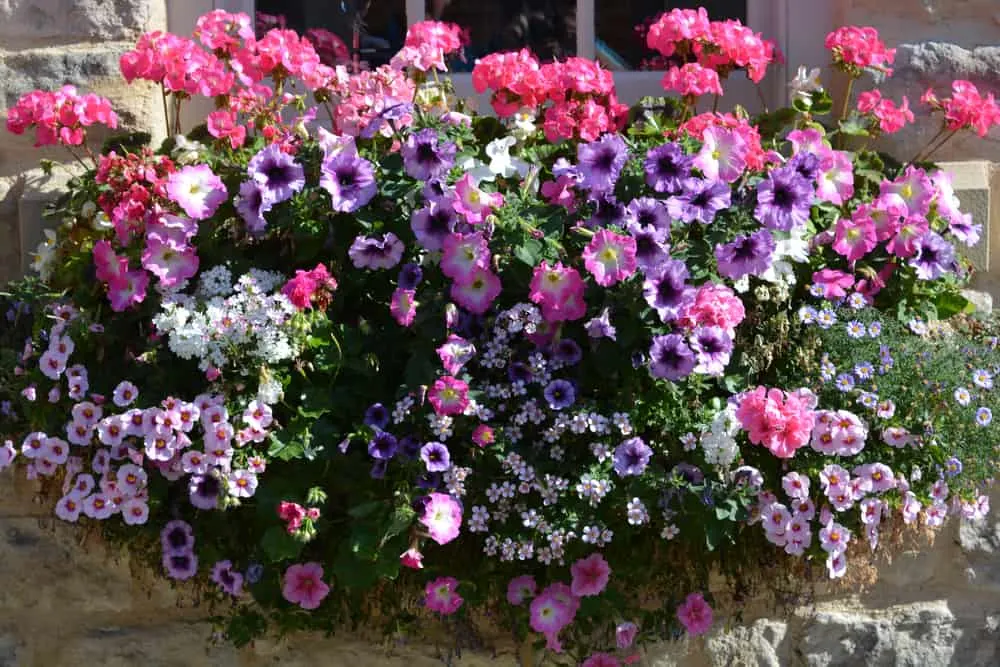
The classic charm of window boxes overflowing with cascading plants and flowers is undeniable. The containers bursting with color and life add curb appeal to any home.
The cascading blooms (often referred to as spillers or trailing plants) can fill the air around the home with an inviting and subtle fragrance. Whether you live in suburbia or a rural setting, cascading plants & flowers can create an appealing and captivating ambience.
Choosing Window Boxes for Your Home
Adding window boxes to your home is like giving it a splash of personality. From the box’s design to the plants and flowers you choose to grow within the receptacles, they all combine to provide character and style to your abode.
You can choose from rustic wooden boxes, vintage wrought iron with coconut coir liner, wicker look, or modern, sleek PVC creations that are even self-watering.
5 Best Cascading Plants & Flowers for Window Boxes
Take your windows to the next level in design with flowers and plants that compliment the season.
1. Petunia
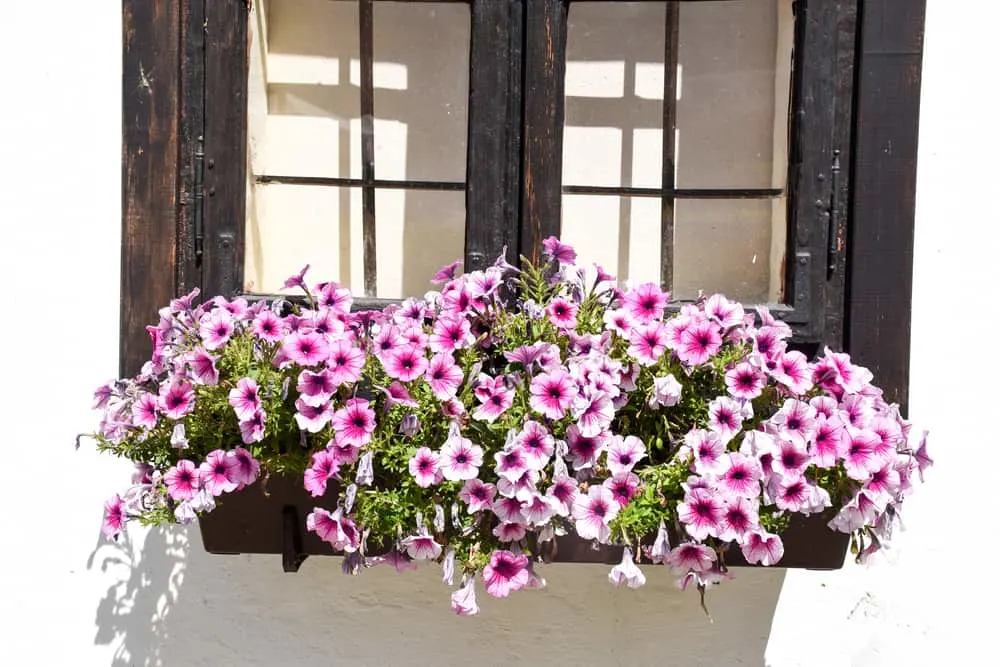
Petunias (Petunia spp.) are flower producing workhorses. The cheerful annuals produce a profusion of vibrant blooms from spring into fall.
The bevy of colors you can pick from is hugely impressive. Choose from whites, reds, purple, and pinks. These flowers come striped, speckled, fringed, or solid. The Wave and Grandiflora petunia varieties have a cascading habit that makes them spill forth out of a window box in an impressive waterfall fashion.
Petunias thrive on extraordinarily little care. You can deadhead some of the types to encourage more blooms, but if you go with the Wave then there is no need to deadhead so you might want to consider planting the variety in hard-to-reach window boxes such as on second or third floor windows.
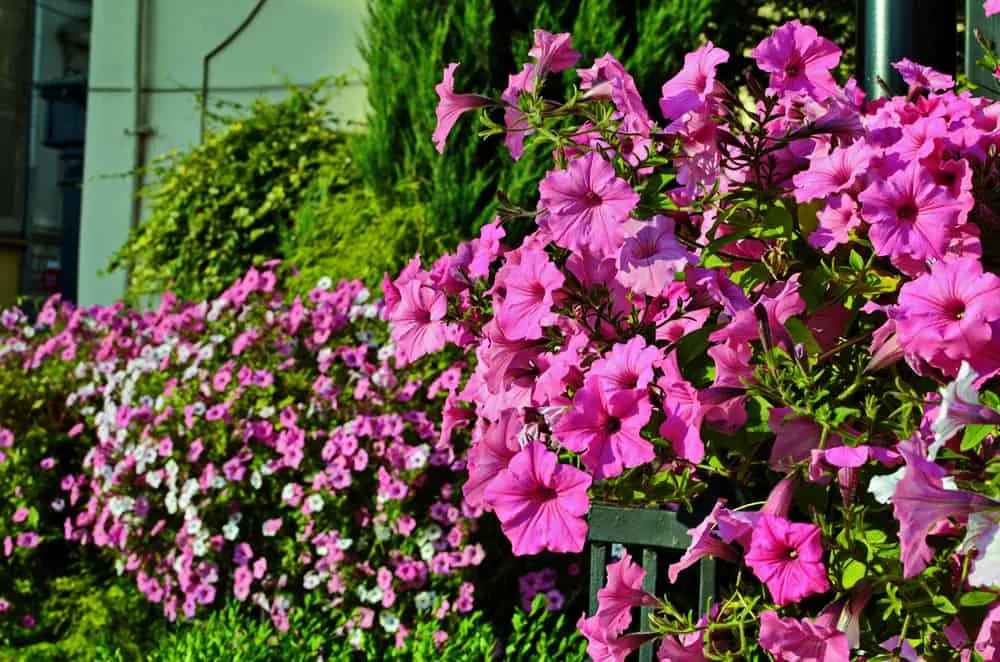
Grandiflora varieties create blooms that measure an impressive four-inches across and extend about 15-inches in length. This variety can rot in exceptionally humid locations which is the only drawback.
Watering: Make sure the window boxes drain freely and keep the soil moist to prevent the cheerful plants from wilting.
Sunlight: Petunias grow best when exposed to five or six hours of sun per day.
Hardiness: In most of the United States, petunias are grown as an annual but in the U.S. Department of Agriculture (USDA) plant hardiness zones 10 and 11 they can survive as a perennial but their blooming ability tends to start to fizzle out as the plant ages so you’ll probably want to replace the tired plants with fresh starts.
2. Nemesia
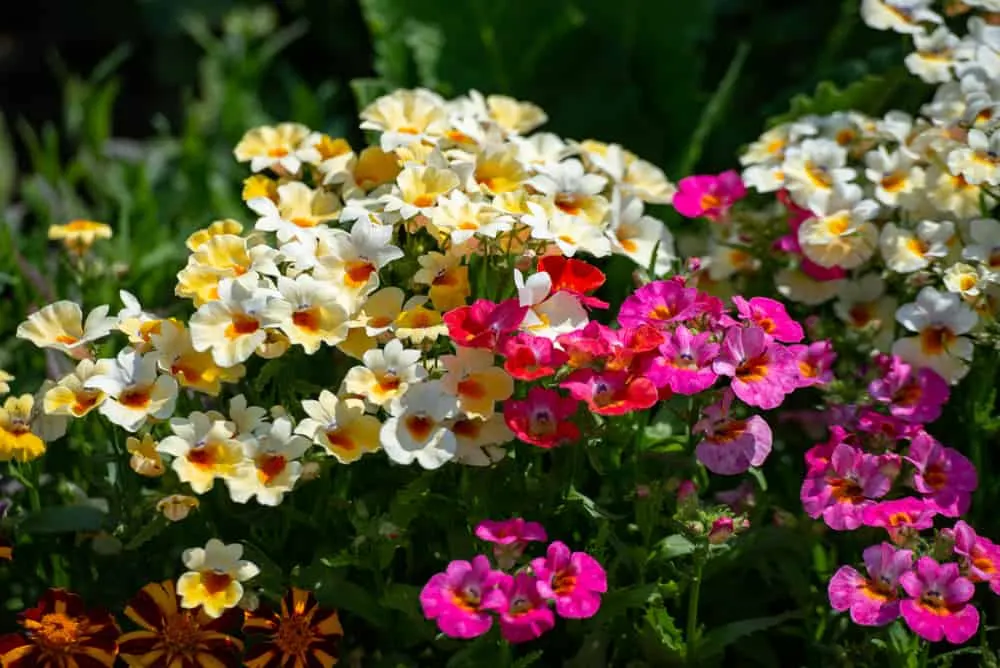
The nemesia (Nemesia strumosa) produces small flowers in a wide array of colors. The blooms have four petals that fan around a large lobed petal. They are often compared to an orchid in appearance. During mild weather, the vigorous plant produces so many blossoms that you often cannot see the foliage.
Most varieties attain a height of up to 12 inches. As they grow, they tend to flop and flow downward. The most popular cascading varieties are the N. strumosa and N. caerulea.
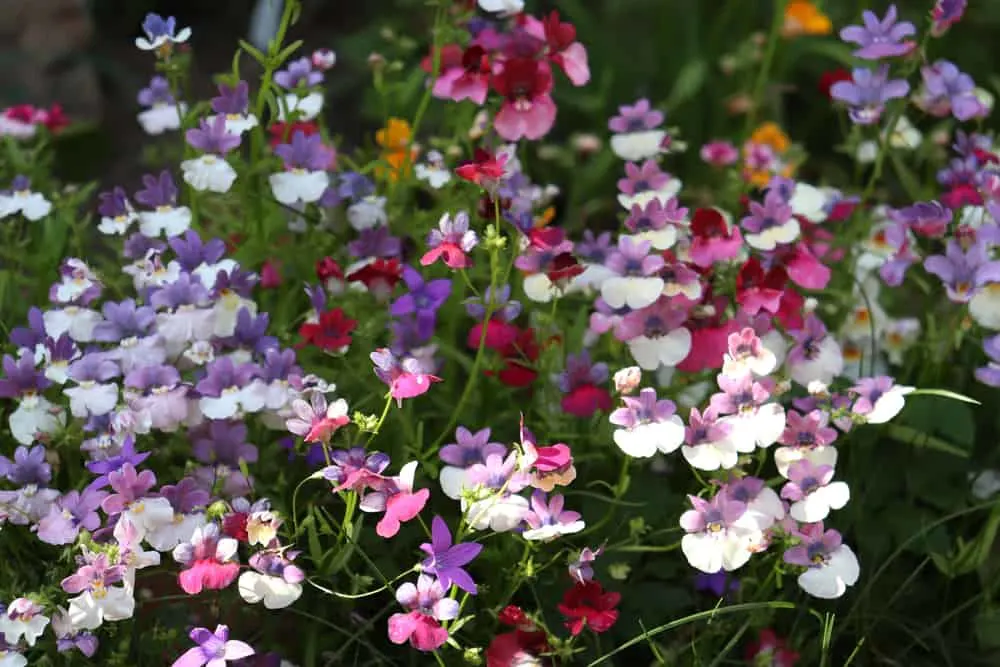
The N. strumosa produces blue or white flowers that measure an inch in diameter. The plant grows about a foot tall in a floppy fashion. The N. caerulea produces flowers that measure about half an inch and appear in shades of white, blue, purple, or pink. The variety can grow up to two feet with a spread of a foot. The flowers tend to reach over the sides of the window box and flow downward in an eye-catching cascade.
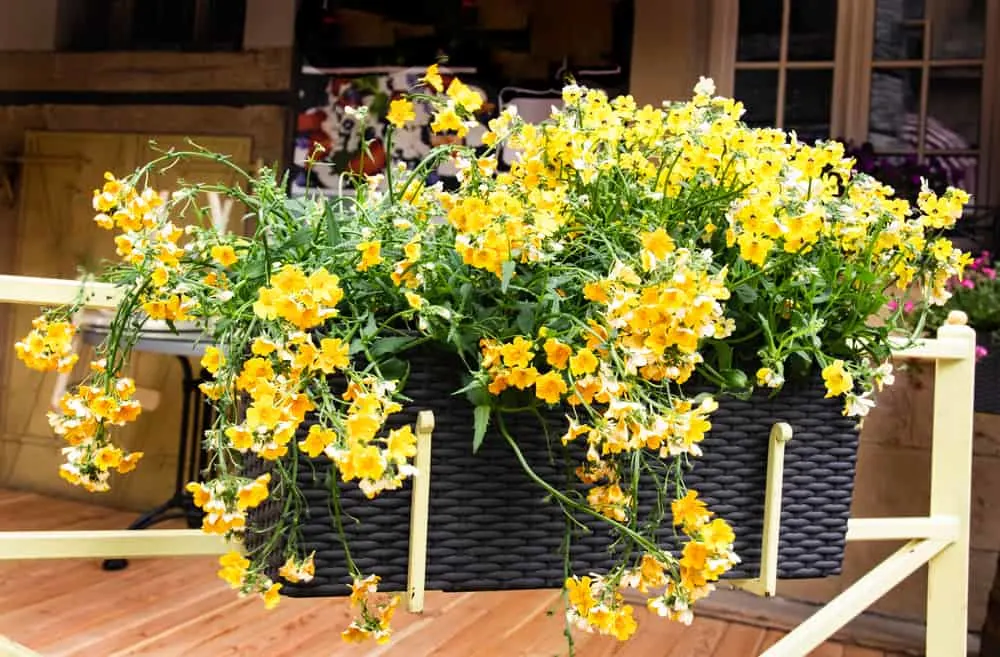
Watering: Keep the soil moist to the touch but never soggy.
Sunlight: Prefers full sun for best flower production.
Hardiness: Grows as an annual or tender perennial in USDA plant hardiness zones 9 and 10.
3. Impatiens
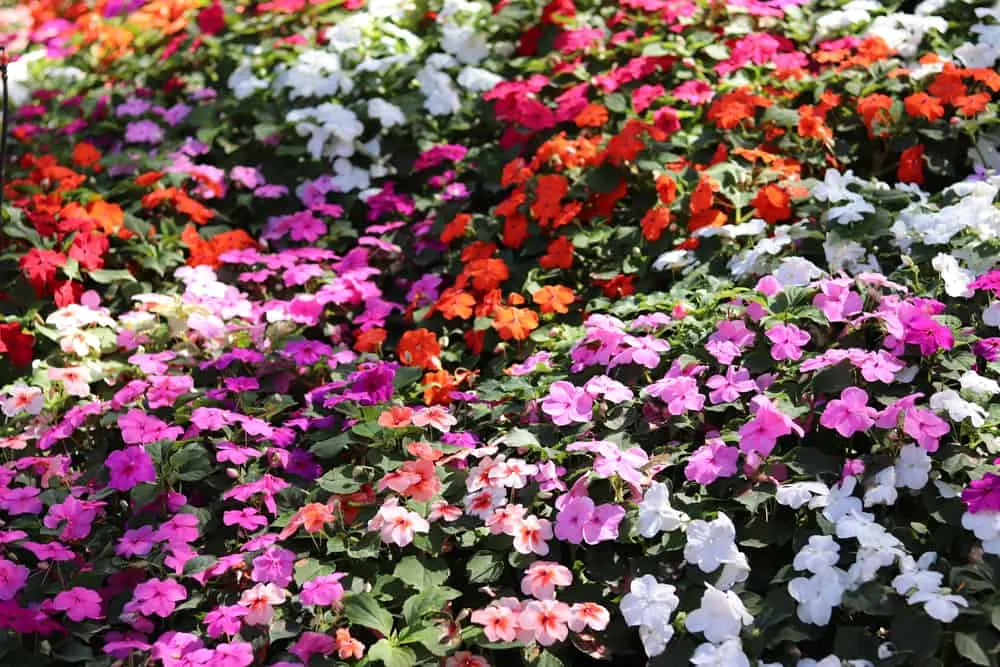
Do you have a shady side of your house adorned with window boxes? Don’t despair, the lovely impatiens (Impatiens walleriana) flourishes in the shade.
It produces a bevy of flowers in reds, pinks, purples, and violets. The non-stop display will continue from spring throughout summer and in warm climates it can easily bloom year-round.
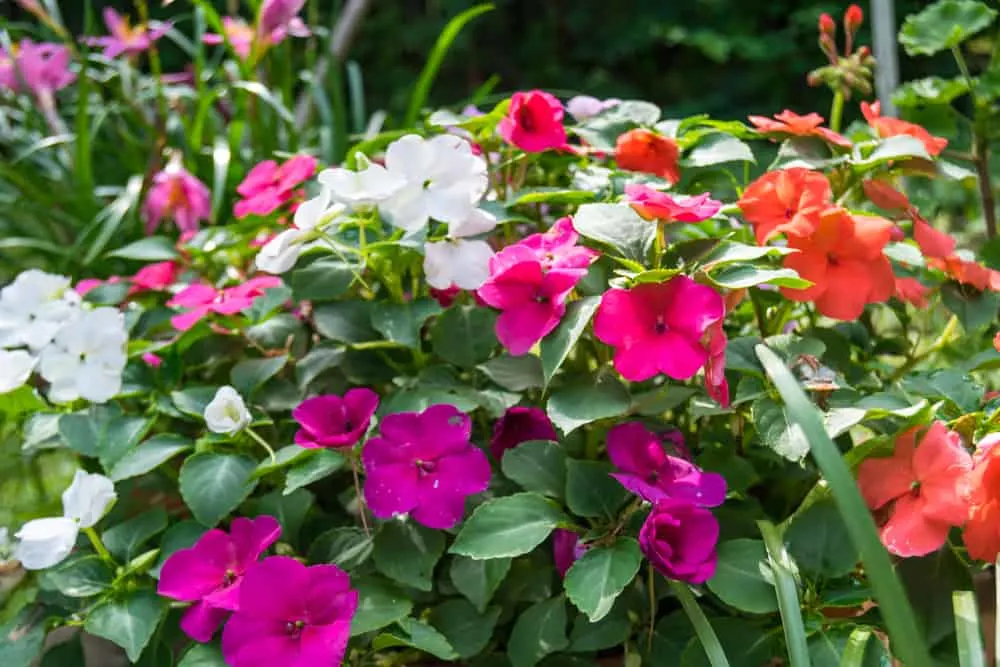
Most varieties attain a height of six inches to one foot. At six inches they look like perky little plants peeping over the edge of the window box and as they reach a foot they start to flop over the box’s sides in a whimsical fashion.
Watering: Keep the impatiens moist. If allowed to dry out, it will quickly shed its foliage.
Sunlight: Prefers shade to keep the flowers perky and prevent the colors from fading.
Hardiness: Grows as an annual or tender perennial in USDA plant hardiness zones 9 and 10.
4. Begonias
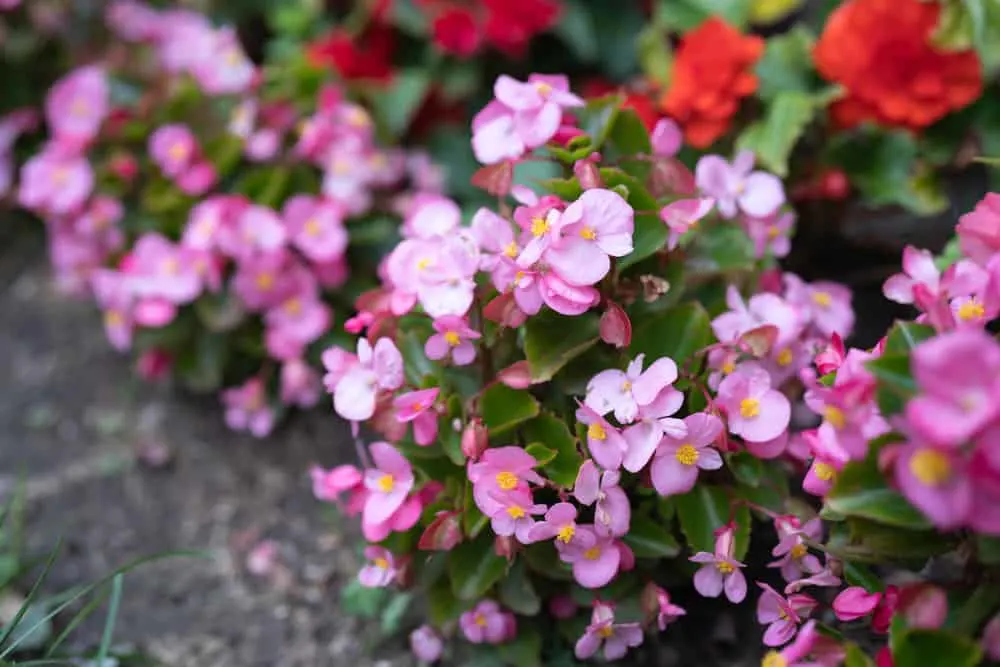
The darling, dangling begonia (Begonia semperflorens) sports variegated leaves and little rose-like blooms in red, white, yellow, pink, or orange. The cheerful plant easily produces flowers from summer to fall.
If you live in an area where the deer are bold and regularly come up to your home to graze your window boxes like a smorgasbord then you’ll be happy to learn that annual begonias are deer resistant so you can easily plant them without fear of having them ate.
Watering: Keep evenly moist but never soggy.
Sunlight: Grows best with morning sun or shade and prefers dappled sun with some shade during the afternoon.
Hardiness: Grows as a reliable perennial in USDA zones 9 to 10 and as an annual in all other zones.
5. Sweet Potato Vine
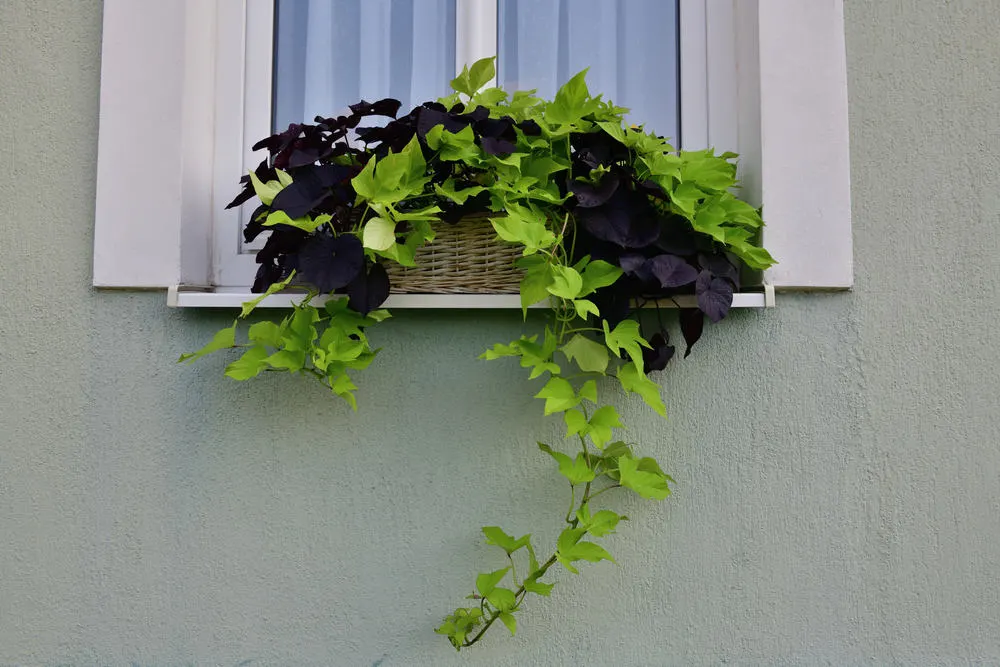
Some homeowners don’t want flowers in their window boxes. Instead they prefer the beauty and classic charm of simple foliage.
The sweet potato vine (Ipomoea batatas) produces lush foliage in a variety of colors.
The Margarita variety provides deep purple leaves. The Sweetheart is known for its charming tri-color foliage in gray, pink and green. The Sweet Caroline has chartreuse hued leaves in full sun that changes to mint green in the shade.
Once established, they are remarkably carefree and easy to grow. The vine can effortlessly trail down five feet from the window box.
Many people sheer the vines into patterns to add a cottage-like charm to the home’s exterior. Some homeowners space flowering plants such as petunias and begonias with the sweet potato vine to create a varied window box.
Watering: Keep evenly moist
Sunlight: Plant in full sun or partial shade
Hardiness: Grows as a reliable perennial in USDA zone 11 and as an annual in all other zones.
These are just a few of the many cascading plants & flowers for window boxes. You can also mix more than one variety in a box to add visual interest and diversity.
